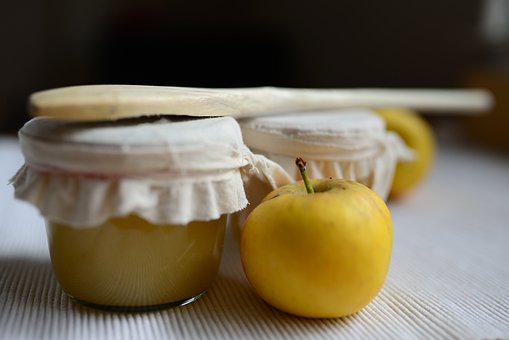Table of Contents
How to Make Homemade Baby Food. 1
Introducing homemade foods to the baby for the first time. 1
Buying of store-bought baby food. 4
Advantages of making your own baby’s food. 4
Most moms anticipate introducing a baby to baby food, while others find it dispiriting. It is always a mixed feeling thing, especially if you don’t know how to make homemade baby food.
Before then, you need to know that it’s advised to breastfeed exclusively for 6 months, and after that, you can happily introduce solid foods and breastfeed at the same time.
You can talk to your pediatrician about when to start weaning.
A part from the joy that comes with Introducing your baby to homemade food, it is also an advantage since you can easily monitor food reactions and prepare foods that give key nutrients like protein, Zinc, and Iron.
More on the baby’s food basket
If your bundle of joy is ready for solid foods, you can use an assortment of fruits and vegetables. You also have the privilege to use frozen veggies and canned fruits in their juices.
Other than the usual homemade foods, you can as well opt for supermarket foods that are also nutritious, like iron-fortified cereal, to feed your baby.
Making your baby’s food is an advantage to both of you since you will expose them to various flavors, which will make them be adventurous eaters.
Besides, you are also the best person who can be in full control of your baby’s nutrition.
If you happen to follow this path, let’s have a look at these guidelines together.
Introducing homemade foods to the baby for the first time
Getting started in introducing your baby to homemade foods can be strenuous at first, but this should not discourage you. You can start them off by mashing ripe bananas and avocado.
You need to be keen enough on how they will respond; if they respond well, you can introduce and prepare foods rich in nutrients like papaya, mango, kale, turnips, or broccoli.
You can also puree or mash the foods and make sure you introduce one ingredient at a time to make your work easier; you can use foods that are in season or just foods that the family is having.
All you need to be is being watchful on salt seasoning and sugar. With this, it will save you a lot of hassles.
Preparing the food

While preparing your baby’s food, you need to observe a lot of hygiene. Ensure that the working area is clean, chopping boards, utensils, your hands, and the foods you prepare for baby’s sanitation.
While sampling the food when cooking, always use a fresh spoon-or clean it off- every time you want to sample the food. Hygiene is vital and equally important.
Here’s the procedure;
_ Ensure you clean and peel. Peel any seeds on your baby’s produce. For fruits and vegetables that grow close to the ground, you need to be extra vigilant since they can gather harmful bacterial, which could later cause food poisoning.
_ Ensure you cook the food till it’s soft enough for the baby. Another hack that ensures that you retain vitamins and minerals in vegetables and fruits is steaming or microwaving in just a little water.
If you want to cook fish and meats, ensure you get rid of all gristle, bones, and skins before cooking.
What to avoid
_ Avoid adding honey to baby’s food or drinks for below 12 months as it may have clostridium botulinum spores. You can puree or mash canned fruits or fresh fruits with their juice.
Another thing you should avoid is adding corn syrup or sweeteners since they don’t add nutrients but many calories.
_ To avoid choking, mash the baby’s food to the right texture. Some foods/ fruits like whole grapes, hotdogs, and raisings are not recommended for infants.
You can thin pureed foods by adding water, formula, or breast milk. Make sure the temperatures are appropriate.
Also, avoid using cow’s milk and other milk alternatives at all costs during the 1st year.
Points to note
_ Cook eggs, poultry, or meats thoroughly to avoid food poisoning. Use the right temperatures to ensure they are well cooked.
You can cook fish at 145 degrees of whole cuts of beef and pork, 160 degrees for ground beef and egg dishes, and 165 degrees for all kinds of poultry, chicken, or leftovers.
_ You can freeze prepared baby food for later use. Do it in small portions by using a clean ice cube tray.
After freezing, you can put cubes into clean, air-tight, freezer-safe food containers for single-serving portions. It is good storage for homemade baby food.
If the baby feeds on the family’s food, set theirs aside before adding salt and seasonings. Their taste buds are very sensitive. As the baby grows and gets used to table food, you can freely add seasoning other than salt.
Preserving baby food

While preparing a baby’s food, you need to be extra cautious to ensure the food is safe and retains its nutrients from fresh foods.
Once through with preparing, you can serve or refrigerate it right away.
Ensure you keep the homemade baby food in an air-tight container for one or two days in the refrigerator or one or two months in the freezer with a label and date.
Keep the food in small portions. Serve food portions that the baby can feed in one sitting.
Since bacteria flourish in the mouth, the spoon you feed the baby with will contaminate the leftover food, and that is why it is advised to serve the baby small portions of food that they will manage to finish.
Buying of store-bought baby food
Foods sold in stores are nutritious, too, and are also a better option for feeding the baby. The food gives balanced and several nutrients content.
In fact, before you decide to do this, you need to talk to your health provider first. They are best to recommend the best foods for your baby and if any dietary supplements are recommendable too.
Advantages of making your own baby’s food
It’s so sweet and fulfilling once you purpose to make your baby’s and accomplish them. The joy of the whole process and, lastly, seeing your baby savoring the food you made.
Here are a few points that will encourage you to make your own baby’s food.
- By making your own baby’s food, you are sure to feed them with fresh and healthy ingredients.
- You’re in a better position to ‘tailor-make’ your baby’s food to their needs and preferences.
- It will satisfy you; I felt this all the time after making the food and feeding the baby. The satisfaction is bliss.
In a nutshell

Introducing your baby to solid foods can be a mixture of feelings; will the baby love the food, can they get sick, can they chock? These queries are bound to run into any parent’s mind.
The transition can be hard and daunting.
You only need to learn how to transition smoothly and discover ways to deal with common baby feeding problems, and make mealtimes enjoyable for you and the baby.
Learn how to make homemade baby food, prepare batches of food easily and quickly, and on the storage part. In addition to that, make an effort to learn new recipes for homemade baby food.
With this, you’ll get to know what the baby loves most.
Please consult your health care provider always, for they are better positioned to advise you on the best foods for your baby.







